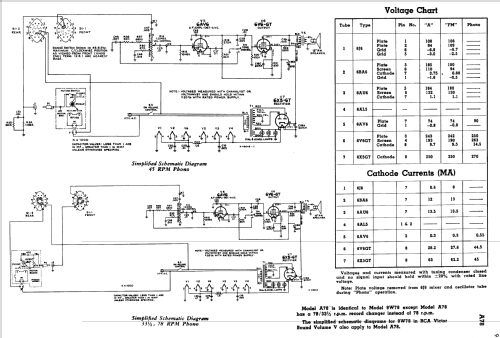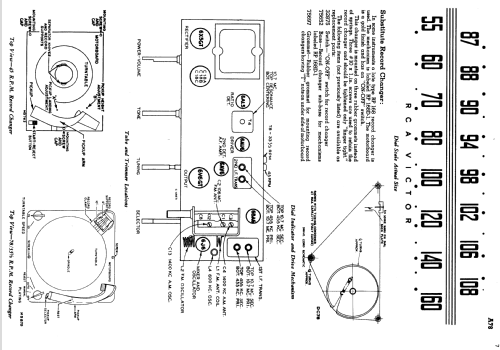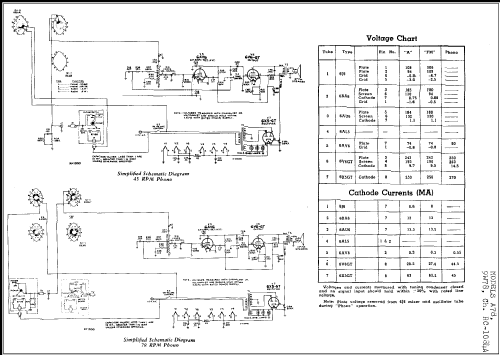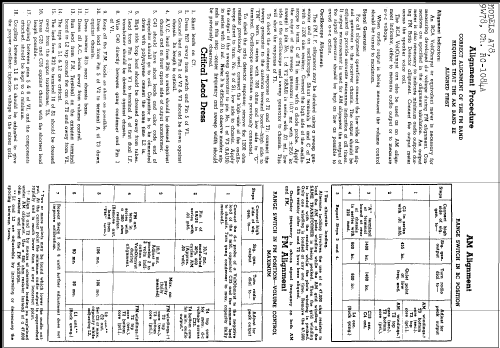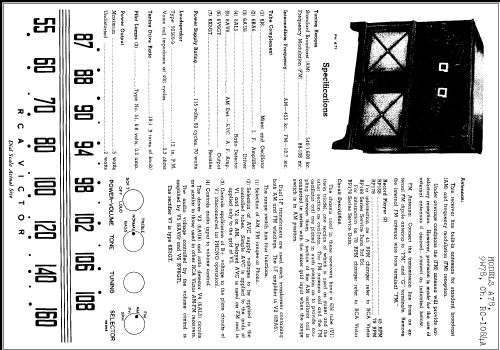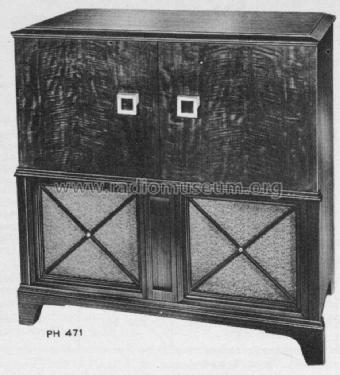A78 Ch= RC-1084A
RCA (RCA Victor Co. Inc.); New York (NY)
- Country
- United States of America (USA)
- Manufacturer / Brand
- RCA (RCA Victor Co. Inc.); New York (NY)
- Year
- 1950/1951

- Category
- Broadcast Receiver - or past WW2 Tuner
- Radiomuseum.org ID
- 54123
-
- alternative name: RCA Manufacturing || Victor Talking Machine
Click on the schematic thumbnail to request the schematic as a free document.
- Number of Tubes
- 7
- Main principle
- Superheterodyne (common); ZF/IF 455/10700 kHz; 2 AF stage(s)
- Tuned circuits
- 6 AM circuit(s) 8 FM circuit(s)
- Wave bands
- Broadcast (BC) and FM or UHF.
- Details
- Changer (Record changer)
- Power type and voltage
- Alternating Current supply (AC) / 60 cycles, 115 Volt
- Loudspeaker
- Permanent Magnet Dynamic (PDyn) Loudspeaker (moving coil) / Ø 12 inch = 30.5 cm
- Power out
- 2 W (5 W max.)
- Material
- Wooden case
- from Radiomuseum.org
- Model: A78 Ch= RC-1084A - RCA RCA Victor Co. Inc.; New
- Shape
- Console with any shape - in general
- Dimensions (WHD)
- 30.5 x 32 x 17.25 inch / 775 x 813 x 438 mm
- Notes
-
The RCA A78 is an AC operated combination automatic phonograph and BC/FM band receiver. Has both a 45 RPM turntable and a 33 1/3, 78 RPM turntable. The 45 RPM turntable used is model RP-168, which holds up to ten 7 inch fine groove records. The 33 1/3, 78 RPM turntable used in this model is 960282-1 , which holds up to ten 12 inch or twelve 10 inch records. The 45 RPM turntable is in the upper compartment and the 78 RPM turntable is in the lower compartment.
The BC band frequency range is 540 to 1600kHz. The FM band frequency range is 88 to 108MHz. Uses Qty(3) #51 lamps, two for the dial and one for the jewel.
Has built-in AM and FM antenna's, with provisions to connect an external FM antenna.
The chassis RC-1084A is shown in a schematic (from Riders) for the models A78 and 9W78. On the same document one can see a cabinet which there is called PH 471. For neither name a Rider's, Photofact or Beitman could be found. The 1950 RCA Victor Service Notes manual make no metion of a model 9W78. The four knobs are Power/Volume, Tone (treble, normal, bass), tuning and selector (FM, AM, PH, XPH). By the way: It was in the early 1960s when RCA Victor called a budget label of records "Victrola" like its first console phonographs.
- External source of data
- Ernst Erb
- Circuit diagram reference
- Rider's Perpetual, Volume 21, Copyright 1950
- Literature/Schematics (1)
- RCA Victor Service Notes "Red Book" Series (RCA Victor Service Data Volume VI 1950 Pages 5-10)
- Literature/Schematics (2)
- Rider's Perpetual, Volume 21 = Copyright 1950 (Riders RCA 21-5 to 21-12)
- Other Models
-
Here you find 5180 models, 3254 with images and 4217 with schematics for wireless sets etc. In French: TSF for Télégraphie sans fil.
All listed radios etc. from RCA (RCA Victor Co. Inc.); New York (NY)

